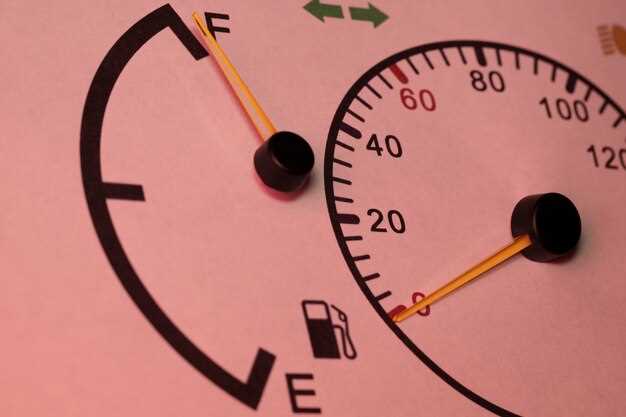
In the competitive world of racing, achieving a winning edge often hinges on the strategic management of weight distribution. The art and science of balance in a vehicle can dramatically influence its handling, speed, and overall performance on the track. Understanding how weight is allocated across a racing vehicle is crucial for drivers and engineers alike, as it directly impacts the car’s grip and stability during high-speed maneuvers.
Effective weight distribution is not merely about optimizing the car’s speed; it also plays a vital role in enhancing balance during cornering and braking. When weight is correctly positioned, it allows for improved tire contact with the road, which translates into better traction and control. Conversely, poor weight distribution can lead to oversteering or understeering, resulting in a loss of performance and potentially catastrophic consequences in a race scenario.
As racers seek to push the limits of their machines, a deep dive into the principles of weight distribution becomes essential. By analyzing factors such as the car’s design, component placement, and driver preferences, teams can fine-tune their vehicles to achieve optimal balance. This approach not only enhances performance but also instills confidence in drivers who rely on their cars to respond predictably at the edge of their limits.
Optimal Weight Placement to Enhance Cornering Stability

Achieving optimal weight distribution is crucial for enhancing cornering stability in racing vehicles. The strategic placement of weight affects how the vehicle behaves during turns, influencing both grip and handling. An ideal weight distribution allows the tires to maintain maximum contact with the track, providing better traction and stability.
Front-to-rear balance is essential in a race car. A slightly forward weight bias can improve front-end grip, allowing for sharper turning responses. Conversely, too much weight over the front can result in understeer, where the car fails to turn as sharply as desired. Balancing weight towards the rear can enhance oversteer, which may be desirable in certain racing styles, but excessive rear weight can compromise stability during high-speed cornering.
Lateral weight distribution also plays a vital role in cornering dynamics. Distributing weight evenly across the left and right sides prevents excessive body roll during turns. An asymmetric placement, where weight is shifted towards the outside of the corner, can enhance grip, but must be managed carefully to avoid instability.
To achieve an optimal balance, engineers often utilize various techniques such as adjustable ballast, repositioning components, and selecting appropriate tire setups. Each racing discipline may require specific weight distributions to adapt to track conditions and driving styles. Testing and fine-tuning weight placement during practice sessions can lead to significant improvements in cornering performance and overall lap times.
Ultimately, understanding the interplay between weight distribution and vehicle dynamics is key to achieving racing success. Fine adjustments in weight placement can lead to a more responsive car that handles better in corners, providing drivers with the confidence needed to push beyond their limits.
How Adjusting Weight Balance Affects Acceleration and Braking

Weight distribution plays a crucial role in the overall performance of a racing vehicle, particularly in terms of acceleration and braking. An optimal weight balance can significantly enhance traction, stability, and responsiveness, leading to faster lap times.
Acceleration is heavily influenced by how weight is distributed across the vehicle. When a car accelerates, weight shifts to the rear wheels. If the weight is biased too far forward, the rear wheels may not receive enough traction, leading to wheel spin and delayed acceleration. By adjusting the weight balance towards the rear, drivers can increase the grip on the rear tires, enabling more effective power transfer and improved acceleration.
On the other hand, braking dynamics can be adversely affected by improper weight distribution. During braking, weight shifts forward, putting additional load on the front tires. If the weight is unevenly distributed, it may result in front tire lock-up or loss of control. A well-balanced weight distribution ensures that both front and rear tires maintain adequate grip during braking, resulting in shorter stopping distances and better handling.
Furthermore, adjusting the weight balance also aids in fine-tuning the vehicle’s behavior during cornering. Cars that are too front-heavy may understeer, while those that are rear-heavy may oversteer. Achieving a balanced weight distribution allows drivers to maintain control and maximize their speed through turns, contributing to both acceleration out of corners and more efficient braking when entering.
Ultimately, a thorough understanding of weight distribution’s impact on acceleration and braking enables racers to make informed adjustments. By optimizing weight balance, drivers can enhance their performance and gain a competitive edge on the track.
Selecting the Right Components for Desired Weight Distribution
Achieving optimal weight distribution is crucial for improving a vehicle’s performance on the track. The selection of components plays a pivotal role in attaining the desired balance. Each part must align with the overall strategy for weight distribution, whether the aim is to enhance acceleration, cornering stability, or braking efficiency.
When choosing suspension components, consider the weight and placement of springs and dampers. Lightweight materials such as aluminum or carbon fiber can significantly impact the vehicle’s center of gravity. Adjustable components allow for fine-tuning of weight distribution based on track conditions, ensuring that the car remains agile and responsive.
Braking systems also contribute to weight balance. The choice of calipers, rotors, and associated hardware should reflect the vehicle’s overall design goals. Placing key components closer to the center of gravity can reduce moment arms, resulting in improved handling characteristics.
Engine placement is another critical factor in achieving desired weight distribution. Front-engine layouts can lead to an inherent front-heavy bias, while mid-engine designs generally promote a more balanced profile. When a car’s weight is evenly distributed, it enhances tire grip, which translates to increased performance during high-speed maneuvers.
Tires and wheels are essential for maintaining balance as well. Selecting the right tire type and size contributes to grip and stability. Be mindful of the wheel’s weight; lighter wheels improve acceleration and reduce unsprung mass, which allows for better suspension responsiveness.
Finally, the driver’s seating position and weight should not be overlooked. Adjusting the cockpit layout can have a significant impact on the car’s balance. By centering the driver’s weight, you achieve finer control, improving the overall dynamics of the vehicle during competition.




